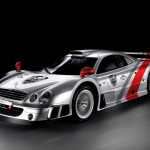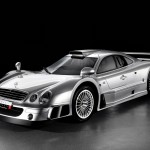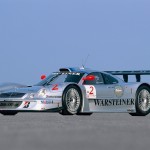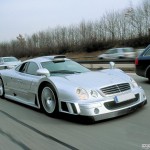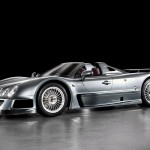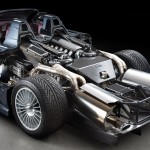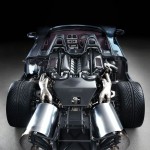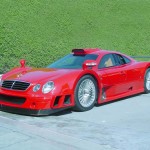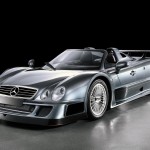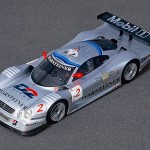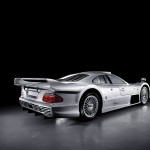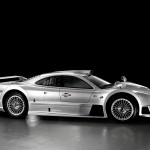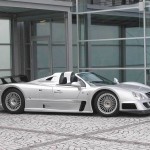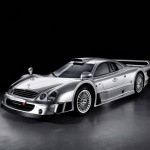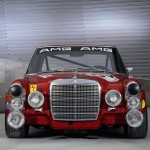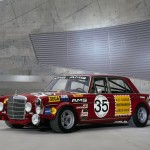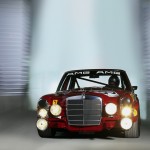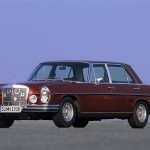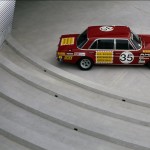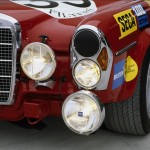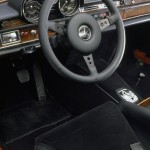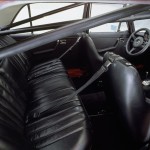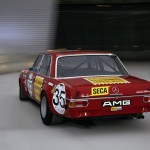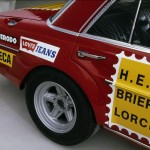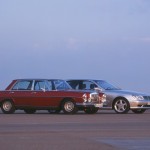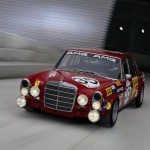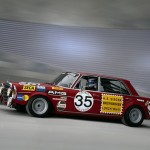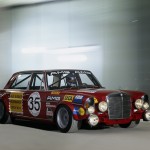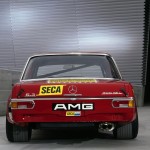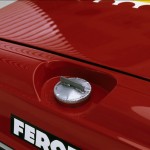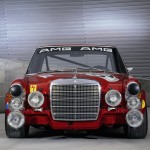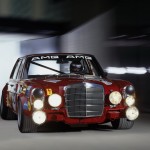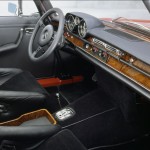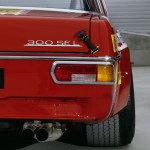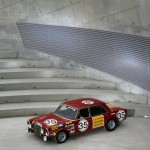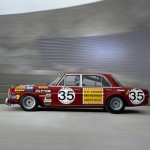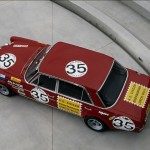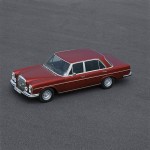Mercedes Benz:
300 SEL AMG – 6.3 & 6.8

Two technical diamonds that will forever remain in the prestigious Mercedes-Benz motoring history. They are the expression of the passion for ultimate driving and adrenalin rush, in an era when power outputs going beyond 250 BHP were seen as total miracles. AMG engineers managed to create the perfect balance between a high-luxury sedan and a sporty coupe, without ruining the number of doors. Although the 300 SEL distinguished itself in the ’60s and ’70s with its pretty massive and powerful silhouette, the 6.3 & 6.8 AMG models developed during this period proved again to the entire world that the Stuttgart-based carmaker could easily overcome weight and dimension issues and build a very agile, fun-to-drive and quick sports saloon.
Actually, the whole 300 SEL AMG business began in 1966 as a private venture between Erich Waxenberger, a company engineer, and Paul Bracq, the designer of this 4 wheel beauty. The result:the world’s first “Super Saloon”, nicknamed “Q-Car”. The 300 SEL 6.3 AMG boasts a 6.3 litres V8 engine with fuel injection, derived from the standard 300 SEL 6.3 power unit with 184 kW/250 hp output. For the AMG version, there was a choice of three engines with different outputs:206 kW/280 hp, 221 kW/300 hp or 235 kW/320 hp, capable of achieveing 51 mkg maximum torque. These V8 units were linked to a 4 speed automatic gearbox. Other technical specifications include:air suspension, automatic choke, ventilated disc brakes on all four wheels, power windows, central locking, power steering. The road performance of the 300 SEL 6.3 AMG was absolutely stunning:the acceleration up to the 100 km/h took just 6.3 seconds, so way below the feared 8 seconds limit, whereas the max. speed reached 235 km/h for the 320 hp model.
AMG engineers continued to improve the basic 6.3 litres V8 unit, and they came up later, in 1971, with the racing version of it, which was installed on the legendary 300 SEL 6.8 AMG, famous for its breakthrough victory in the 24 h race, held at Spa in Belgium. The engine displacement went up by 0.5 litres, reaching 6.8 litres. Further on, the new unit received ‘sharper’ camshafts, larger intake valves and modified rocker arms and pistons that enabled a power boost up to 315 kW/428 hp and a maximum torque of 62 mkg. 265 km/h was the maximum speed to be achieved by the 300 SEL 6.8 AMG. But 6.8 was not enough, so the things went higher, up to 6.9 litres. With these special engine fitted, the 300 SEL AMG could reach 100 km/h in only 4.2 seconds, 200 km/h in 12 seconds and could cover a quarter mile in only 14 seconds. However, the odds were against this special model:new racing regulations that imposed a max. displacement to be used of only 5.0 litres, plus the absence of adequate tyres ment a short life for the 6.9, not to mention the 6.8. What is quite funny is the fact that a prototype of a 300 SEL 6.9 AMG still exists in Finland and it is, as the owner states, in a very good shape.
If you proceed below, you will be able to read the most important bits of press releases which I have found and which are related to 300 SEL AMG models.
Enjoy!
OFFICIAL PRESS RELEASE No. 1
Taken from:’Press Kit-40 Years of AMG, AMG milestones: Successes on the track and outstanding technological achievements on the road’, published on May 08, 2007, at Los Angeles, USA
* 300 SEL 6.8 AMG: a racing saloon with a unique history
A fire red paint finish, imposing tyres and a mighty eight-cylinder engine under the bonnet – it could only be the Mercedes-Benz 300 SEL 6.8 AMG. Even today, motorsport aficionados still rave about the victory at the 24 Hours of Spa-Francorchamps 36 years ago. Piloted by Hans Heyer and Clemens Schickentanz, the racing saloon took its place on the start grid of the classic long-distance race in the Ardennes in Belgium alongside established rivals from Alfa Romeo, BMW, Chevrolet, Ford and Opel. Nobody had thought it possible, but the 300 SEL 6.8 AMG crossed the line in second place on its very first outing, winning its class in the process. As a result, the company from Affalterbach which had been founded in 1967 became famous overnight – and the AMG legend was born out on the race track. The Mercedes-Benz 300 SEL 6.3 – at that time the fast German-built car in series production – provided the technical platform for the AMG racing car. With its V8 engine mustering 184 kW/250 hp from a displacement of 6.3 litres and a peak torque of 51 mkg, the Stuttgart-built luxury saloon was deemed to be the scourge of the sports car fraternity. In the racing version, AMG implemented a host of measures including expanding the displacement to 6.8 litres and fitting “sharper” camshafts, larger intake valves, as well as modified rocker arms and pistons to boost output to 315 kW/428 hp and torque to 62 mkg. This enabled a top speed of 265 km/h on the race track, compared to the standard-production saloon’s 221 km/h. However, this spectacular racing car was denied any further success following a change to the regulations which imposed a maximum capacity of 5.0 litres on cars in the European Touring Car Cup from 1972 – too little for the large-displacement, naturally aspirated AMG V8 engine.
* 300 SEL 6.3 AMG: Luxurious sports saloon developing up to 235 kW/320 hp
The achievement of the racy “6.8” in Spa-Francorchamps had a definite impact on day-to-day business at AMG. With the German and international press still lavishing praise on the red touring car racer, power-hungry Mercedes customers were already requesting that AMG tune their 300 SEL 6.3. Despite the fact that the saloon had maintained its status as the fastest German car in series production ever since it was unveiled in 1968, squeezing even more power from the standard 184‑kW/250-hp eight-cylinder unit was an effortless task for AMG. There was a choice of three power ratings: 206 kW/280 hp, 221 kW/300 hp or 235 kW/320 hp. The engine’s displacement of 6289 cc was left unchanged, instead the untapped potential of the Mercedes engine was harnessed by the traditional means of machining the cylinder head, fitting new camshafts and modifying the intake and exhaust ducting to turn it into a true AMG V8. The 235-kW/320-hp version of the 300 SEL 6.3 AMG accelerated from 0 – 100 km/h in just 6.7 seconds and attained a top speed of 235 km/h (standard model: 8.0 s; 221 km/h). This allowed the racy AMG Mercedes to truly hold its own with any sports car. AMG fitted a newly developed sports suspension to handle the heightened performance capabilities.
OFFICIAL PRESS RELEASE No. 2
Taken from:’Press Kit: 35 years of Mercedes-AMG, The history of AMG: 35 years of Mercedes-Benz high-performance vehicles and production-car track success’, published on Oct 10, 2002, at Affalterbach, Germany
The breakthrough in 1971 with
class victory in the 24 Hours of Spa
In its early years, AMG concentrated on building racing cars based on the Mercedes-Benz 300 SE and competing in European touring car races. And the company didn’t have to wait long to taste success, their first real breakthrough arriving in 1971. A Mercedes-Benz 300 SEL 6.8 modified by AMG took a surprise class victory in the 24-hour race at Spa in Belgium, finishing in second place overall. Sharing the driving duties in the racing saloon that day was the partnership of Hans Heyer and Clemes Schickendanz.

